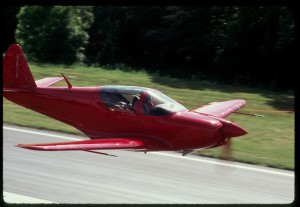By S. Clayton Moore
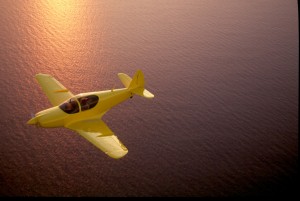
Flight testing for the LoPresti Fury has been done from the company’s aerodrome in Vero Beach, Fla., but production will be moved to another state soon.
The LoPrestis have aviation in the blood. Each family member has contributed in creating some of the most unique products in the general aviation business under the banner of LoPresti Speed Merchants.
All their efforts reflect the legacy of the family’s hot-blooded patriarch, Roy LoPresti, the late, legendary aircraft designer who fathered projects ranging from the lunar lander to the Grumman Tiger. His legend lives on in what may be the LoPrestis’ greatest contribution to aviation history, a new project that merges his love for speed with his immense appreciation for a well-made aircraft. The family soon hopes to bring to life the LoPresti Fury, a radically unique, military-style sport airplane designed, engineered and built by Roy LoPresti.
Funded by a booming business in aircraft modifications, the LoPresti family is pressing on with his last project. Originally designed for Piper, the aircraft project was derailed by Piper’s bankruptcy in 1991. Now, after an extensive legal battle funded with the blood, sweat and tears of the family, the plans for the LoPresti Fury are back on track.
In a bustling aerodrome in Vero Beach, Fla., you’ll find them up to their elbows in work. All four of Roy LoPresti’s sons—Curt, Jim, Bud and David—are there making plans, supported by the glue that holds the family together, their mother, Peggy LoPresti. Their father’s longtime friend, Rj Siegel, originally a designer at Apple computers and now the business manager for the LoPresti Fury, also supports them.
“Every mother would agree,” said Peggy LoPresti of her sons. “I think they’ve all done very well.”
“Life is short…Fly fast!”
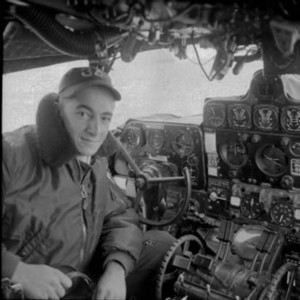
Fury designer Roy LoPresti got to experience military flying first hand during the Korean War. Courtesy
Roy LoPresti’s entire career can be summed up in his lifelong motto: “Life is short.Fly fast!” Today, a sign bearing the saying is still mounted in the LoPresti hangar.
“Roy LoPresti was a child of that early part of the 20th century when our belief in aviation told us we could go anywhere, long before the technology proved it to be true,” Siegel said. “When he was a kid, the guys who were flying cross-country in little box-kite airplanes were like astronauts are today. He knew instantly that he was going to be an airplane designer as soon as he saw one.”
Born June 9, 1929, in Lyndhurst, N.J., Roy LoPresti’s focus was startling from a very young age. Even before graduating from New York University in 1950, he won the Chance Vought Design Award for best student light airplane design.
He landed a job with Grumman Aircraft, where he gained a unique insight into military-style aircraft that would reemerge later in the Fury. But before he could really get going, the Korean War broke out. LoPresti got to experience military flying firsthand when he volunteered to fly sorties into North Korea.
Although he worked on missiles initially at Grumman, they had other plans for him. The story goes that Bill Grumman marched into LoPresti’s office one day in the early 1960s, asking the young designer for help on a new contract. It turned out that President Kennedy decided America was going to the moon and Grumman asked LoPresti if he could build a lunar lander.
“Sure, no problem,” said LoPresti, sketching ideas on scraps of paper. “What’s a lunar lander?”
Just like that, LoPresti joined the space race, helping lead a team of 40 Grumman designers in imagining and building the Apollo Lunar Module used on America’s first mission to the moon.
He spent 16 years at Grumman, not just building planes but making them better. One of his most dramatic tasks was to take the Grumman Tiger, an aircraft that initially flew at 110 miles per hour, and reengineering it so that it went 160 mph. He was also responsible for designing the Cougar and the Tiger.
The move boosted Grumman’s sales so much that Mooney Aircraft soon came calling, recruiting LoPresti to serve as president and chief engineer for much of the 1970s and 1980s. He created a marketing plan for Mooney that centered around his making the Mooney 201 fly at 200 mph on 200 hp on the 200th birthday of America—July 4, 1976—and succeeded.
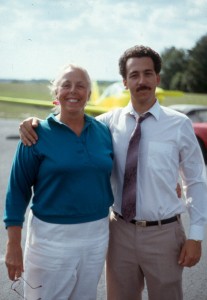
None of the LoPresti achievements would be possible without Peggy LoPresti, seen here with son David LoPresti.
Later, he went on to Beech Aircraft, where as vice president and chief engineer, he was one of the highest paid employees in the aerospace industry. But when Beech shuttled LoPresti into a management position making missiles and bombs, he balked. Expressing his dissatisfaction to his wife, she had a simple answer for him: just quit.
“I still believe, when you go to work every day, you have to be happy at the place you go because you spend more time there than you spend any other place,” Peggy LoPresti said.
So, in 1987, Roy LoPresti walked away from one of the most influential jobs in the aviation industry and went off to make the airplane he had always dreamed of.
Dreaming the Fury
“My dad decided then to get back into the small airplane business,” said Curt LoPresti, now president of LoPresti Speed Merchants.
LoPresti struck up a friendship with Stuart Millar of Piper Aircraft, who was trying to convince him to redesign the Piper line. Instead, the two men quietly started a small company called LoPresti Piper, designing the Fury in secret in the manner of a skunk works.
He also had a lot of help. The LoPresti brothers, who were scattered throughout America at companies like Boeing and McDonnell Douglas, all left their jobs and came to help build the Fury.
“I think it’s genetic,” recalled David LoPresti. “When we were children, Dad used to brag to all his friends, ‘I’m breeding my own airplane company.’ Turns out, he was right.”
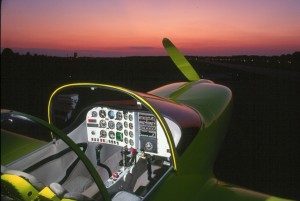
Stick-and-rudder fans will find much to love in the Fury’s military-inspired, side-by-side cockpit setup.
It was the first aircraft LoPresti had worked on where he wasn’t hamstrung by the legacy of an aircraft brand. His vision was to build a sporty aircraft that had the dexterity of a military fighter while still integrating the comfort and features of a civilian aircraft. No slouch in the business world, LoPresti envisioned the light sport aircraft market a decade before it came to pass.
“Our goal was to build the best-handling sport airplane ever,” Curt LoPresti explained. “The crème de la crème of sport airplanes with that level of handling is the Aermacchi SF-260, but it was our goal to do better. We call it ‘jet quality.’ It looks, and flies, like a military airplane.”
By 1988, the aircraft was ready. Modeled after the Globe Swift, the Fury has been completely reworked with a 200-hp Lycoming IO-360 engine, jet-designed push rod controls, and a military-style throttle and stick. The two-person, side-by-side aircraft has a range of 1,000 miles and a maximum speed over 220 mph.
“It flies better than it looks,” said Curt LoPresti, who also serves as the aircraft’s test pilot these days. “It’s a fingertip airplane. There are no tricks played on the control system. All you feel are the aerodynamic forces working on the airplane. It’s pretty sweet.”
Roy LoPresti and Stuart Millar took the Fury prototype to EAA AirVenture Oshkosh, despite the doubts of other Piper employees.
“We brought that airplane to the first show and unveiled it,” he remembered. “We came back with 131 $10,000 checks, which was a real grand slam. I don’t think that’s ever happened before in the history of general aviation. That number grew very quickly, and in two years we were up to 569 orders for the Fury.”
Unfortunately, the financial boost wasn’t enough to keep Piper afloat.
Speed Merchants
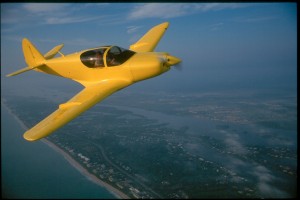
The Fury’s test pilot is LoPresti Speed Merchants President Curt LoPresti, seen here piloting the prototype with aviation writer Bill Cox.
Piper couldn’t rise above its own financial struggles and ended up in bankruptcy court in 1991. Roy LoPresti, with his usual good-natured attitude, expected to get the rights to the Fury back with little trouble, but he was wrong.
“It was a legal battle from all different corners,” Siegel remembered. “It was like, holy smoke, this airplane that everybody wanted was suddenly up for grabs. We had to fight like hell to get the intellectual property back, but when we finally got it back a decade later, we got all of it back—the prototype, the tooling and the rights to the design. But it was not an easy fight.”
Determined that no one would get hurt in the new airplane business, LoPresti had insisted that all the checks be kept in interest-accruing accounts until the plane was ready. The first Fury business might be the only venture in aviation history where every buyer got their money back, with interest.
But until they could get the rights to the plane back, the family knew they had to find a way to keep themselves afloat. To stay busy, they founded a company called LoPresti Speed Merchants to create and manufacture various modifications for aircraft.
“We thought the bankruptcy would be sorted out in short order,” said Curt LoPresti. “We needed to find a way to keep all of the LoPrestis employed so we started the company with the understanding that it would only be around six months. Right now, we’re in our 16th year.”
With just 22 employees, the company now manufactures hundreds of different products ranging from speed modifications to lighting components. It holds 50 standard type certificates for modifications to nearly every aircraft in general aviation including Piper, Mooney and Grumman, as well as manufacturing standard parts for aircraft for Cirrus, Columbia, Adam Aircraft and Raytheon. More than 150 dealers across the country distribute LoPresti’s products.
The company has four different arms, which include the speed mods business, fleet operations and sales, an engineering team that hires itself out to manufacturers to solve complex aircraft design problems, and the LoPresti Aerodrome, a 20,000-square-foot complex that provides FBO services.
“It’s a small FBO,” Siegel said. “It’s really designed to take our own products, put them on airplanes and test them. But we’re open to the outside world as well.”
Just this year, Speed Merchants has introduced “Knot Wax,” a complex technology using ambient temperature-cured glass to provide a protective coating 1,000 times denser than traditional wax.
The LoPresti Fury will be run as a separate company, independent of the Speed Merchants operations, which will continue to provide customers with aviation modifications. The Fury is likely to be built in another part of the country.
A place to be
The most significant setback for both company and family came in 2002 with the unexpected passing of the family’s venerable namesake. On July 5, 2002, Roy LoPresti climbed a ladder on the back of his house in Florida to get some leaves out of a rain gutter. He slipped, hit his head, and passed away 35 days later.
“It was quite a blow,” said Curt LoPresti. “It was a real come-to-Jesus moment for the family because my dad had been the patriarch and he was very strong-willed. He had this minor celebrity status in the aviation world and he made most of the sales.”
Despite their loss, the family pulled together with the help of Rj Siegel.
“It was the final stage of growing up, I think,” Curt LoPresti said. “Thank God, I had a lot of good help. When you’re at your lowest, you find out who your friends are in a big hurry. Rj and Roy were kindred spirits because they both tended to think out of the box. That’s probably why Rj gets along so well with the rest of us LoPrestis. We’re all dreamers.”
With hard work and a little luck, the LoPresti family is keeping the dream of building the Fury alive. While it takes about $25 million to launch an airplane company, Roy LoPresti completed much of the engineering and certification work on the Fury before his death, giving it a significant jumpstart.
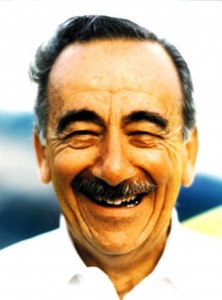
Roy LoPresti always said, “Life is short, fly fast!” and his final masterpiece, the Fury, lives up to his motto.
“Everyone always asks if they can be investors,” Siegel said. “I always tell them, ‘The best way to invest in LoPresti is to buy two Furys instead of one. What color would you like?’ We’re constantly looking for investors, but we have a different initiative right now.”
The biggest challenge facing the LoPrestis these days is location, location, location. While Speed Merchants will remain in Florida—where there are more than 22,000 aircraft registered, which is more than all of Europe combined—the LoPresti Fury needs a new home.
“The problem with Vero Beach is the weather,” Siegel explained. “The total damage at our building during the last hurricane was $100, but that’s only because our guys engineered new ways of bolting down the doors. It’s not the kind of weather you want when you’re building an airplane, especially when you have a few of them stacked outside.”
Initially, the LoPrestis thought they would simply find a more interior location in Florida, but then something odd happened. A small Florida newspaper printed an article revealing that LoPresti was considering relocating their airplane factory and communities across the U.S. heard the message loud and clear.
“Since that article came out, we’ve been solicited by more than 74 communities in 30 different states, all lobbying us to come to their community,” Siegel said. “We’ve been welcomed in communities across the U.S. with open arms. It’s really breathtaking.”
It’s not an insignificant deal for these communities. The Fury airplane factory will eventually produce more than 300 well-paying manufacturing jobs. Aviation and aerospace is also a real economic attraction for communities, as evidenced by New Mexico’s major investment in the Rocket Racing League and Virgin’s spaceport project as well as a significant package of incentives designed to keep Eclipse Aviation happy with the state.
In fact, New Mexico is one of the three finalists in the running to be the final home of the LoPresti Fury factory, along with locations in Georgia and Texas. But it’s not all about money.
“It’s a perplexing problem,” Siegel admitted. “You would think we’d just go with the place that gives you the most money and facilities, but that’s not necessarily true.”
In fact, the wrinkle in the selection process comes from Roy LoPresti himself. As a child growing up around airplanes, he always praised the fact that at one time anyone could come to the airport and hang around with pilots, planes and other aviation aficionados. He wanted that feeling again at the LoPresti factory.
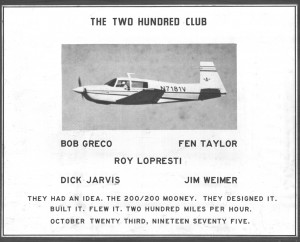
Roy LoPresti always said, “Life is short, fly fast!” and his final masterpiece, the Fury, lives up to his motto.
“We’re trying to do something new here and it’s something that Roy always wanted,” Siegel remembered. “It’s not just a manufacturing facility. It used to be that you could hang around the airplane and figure out which airplanes were which and ask questions. That’s gone away in today’s industry-driven world.”
To further that dream, the LoPrestis intend to integrate a 1950s style diner/coffee shop close by the manufacturing facility where anyone can come and watch the Fury in all its glory.
“It’s a place for people to come around and watch the airplanes but maybe also learn a little bit about aviation in general,” Siegel said. “It’s not just a factory; it’s a place for people to be. We’re looking for a community that understands that we might have 50 airplanes fly in on a Saturday. We need them to accept that idea.”
Roy LoPresti’s legacy
The LoPrestis hope to announce the site selection sometime this summer, possibly in time for a major air show. In the meantime, the company is also celebrating Roy LoPresti’s legacy with some new programs designed to get people excited about the company and its products.
To introduce people to new products like Knot Wax, the company is holding “First Saturdays” at its Vero Beach facility, where customers can enjoy an open house, a technical presentation by experts in the company and the genial pleasures of general aviation.
“They get 40 minutes of information, an hour of coffee and donuts, and three hours of lying about flying,” Siegel laughed.
Future customers can also enjoy a unique instruction program in the works from LoPresti.
“The trick is that we’re talking about gentlemen aerobatics here,” Siegel explained. “It’s not just a utilitarian aircraft to take you from point to point. It’s a fun airplane to fly, but you have to make sure people can fly it.”
To entice pilots interested in learning the Fury’s aerobatic capabilities, the company is taking flying lessons one step beyond with a genuine “Top Gun” flight school.
“We thought it would be a great idea to entice pilots who want to learn aerobatics,” Siegel said. “Not only are we going to teach you how the airplane flies, but we will train you in a way that is fun and makes sense. A Top Gun school makes the perfect sense.”
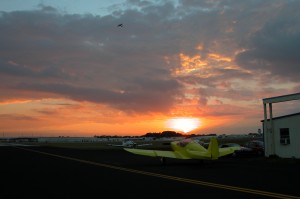
The sun may be setting on the LoPresti Aerodrome, but the company has a bright new beginning ahead of it.
The LoPrestis have gotten praise from throughout the general aviation industry for their efforts. Even Alan and Dale Klapmeier at Cirrus have told the family that they believe their customers would buy the Fury as a second, ‘fun’ airplane.
Curt LoPresti and his brothers went back to the Fury’s original buyers who had received their money back in the wake of Piper’s bankruptcy, largely due to Roy LoPresti’s business savvy. Nearly all of them have signed up once more, and the LoPresti Fury is sold out through its first year of production, a total of 60 aircraft.
The company intends to build five certification aircraft as soon as possible once LoPresti Fury has a home. The current plan is to take another six to nine months to get the factory underway. Once it’s functional, Siegel anticipates another 21 months to get airplanes rolling out of the factory.
The company has come a long way since Roy LoPresti first started roughing out ideas, and aviation is still in the family’s blood.
“I never really had a chance,” laughed Curt LoPresti. “I was born on an Air Force base as the son of an Air Force pilot. I know exactly what my Dad would want to do and that’s to finish this airplane. It’s up to me and my brothers, my mom and our good friend Rj. We’re going to make this thing happen.”
Peggy LoPresti believes her husband would be pleased with their progress.
“I think Roy would be quite proud of his family,” she said. “We’ve all survived a quite terrible time and we still work together every day. We still come in every day and say good morning and good night to each other. That’s a big accomplishment by itself. We’re getting along, the business is prospering and we have a lot of plans. You can’t ask for much more than that.”
For more information about LoPresti Speed Merchants, visit [http://www.speedmods.com]. To find out more about the LoPresti Fury, visit [http://www.loprestifury.com].












